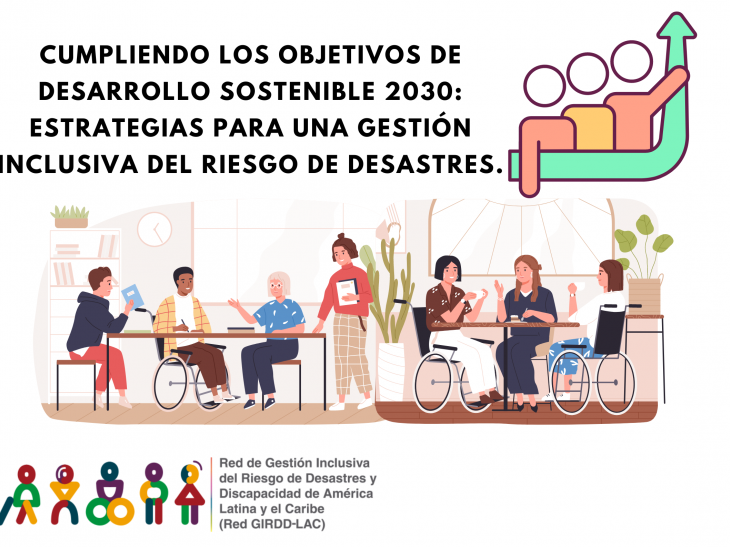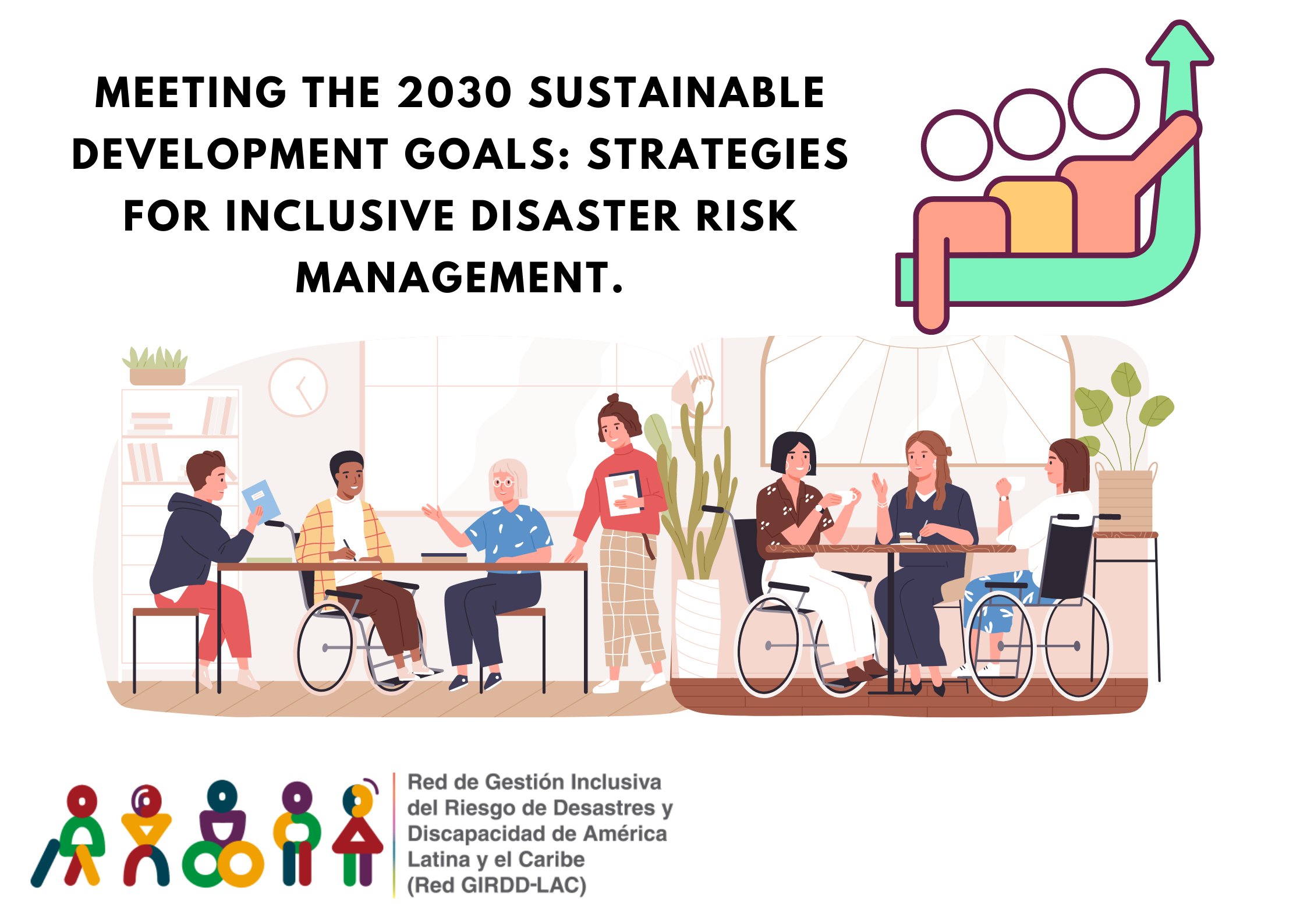
Meeting the 2030 Sustainable Development Goals: Strategies for Inclusive Disaster Risk Management.

Within the framework of the Sustainable Development Goals (SDGs) for the year 2030, inclusive disaster risk management emerges as a cornerstone to ensure resilient and sustainable communities around the world. Effectively addressing inclusion in disaster risk management not only contributes to SDG 11 (Sustainable Cities and Communities), but also positively impacts other related goals, such as SDG 1 (No Poverty), SDG 3 (Health and well-being) and SDG 10 (Reduce inequalities).
1. Integration of Inclusion in National and Local Policies:
To achieve the 2030 SDGs, it is essential that governments integrate inclusive disaster risk management into their national and local policies. This involves the creation of regulatory frameworks that promote accessibility in urban planning, the construction of resilient infrastructure, and the inclusion of the most vulnerable communities in decision-making processes.
2. Capacity Building and Community Awareness:
SDG 4 (Quality Education) and SDG 17 (Partnerships to achieve the goals) can be strengthened through educational programs that promote awareness on inclusive disaster risk management. The training of community leaders, emergency response personnel and the general population will contribute to the construction of informed and prepared communities.
3. Technology and Access to Information:
The implementation of SDG 9 (Industry, innovation and infrastructure) benefits from incorporating innovative technologies in disaster risk management. Accessible early warning systems, information platforms in diverse formats, and the use of artificial intelligence can improve the ability of communities, especially those with disabilities, to prepare for and respond to disasters.
4. Intersectoral and Global Collaboration:
SDG 17 highlights the importance of partnerships. Inclusive disaster risk management requires collaboration between government sectors, non-governmental organizations, the private sector and civil society. Synergies between these actors can amplify the impact of initiatives, ensuring a comprehensive and sustainable response to risk management challenges.
5. Continuous Evaluation and Monitoring:
To ensure compliance with the SDGs, it is crucial to establish continuous evaluation and monitoring mechanisms. These systems should include specific indicators related to inclusive disaster risk management, allowing governments and organizations to adjust and improve their strategies over time.
Conclusion.
Meeting the 2030 SDGs through inclusive disaster risk management not only protects the most vulnerable communities, but also promotes sustainable development that embraces the diversity and needs of all. By adopting these strategies, we can build a more resilient and inclusive future for generations to come.


